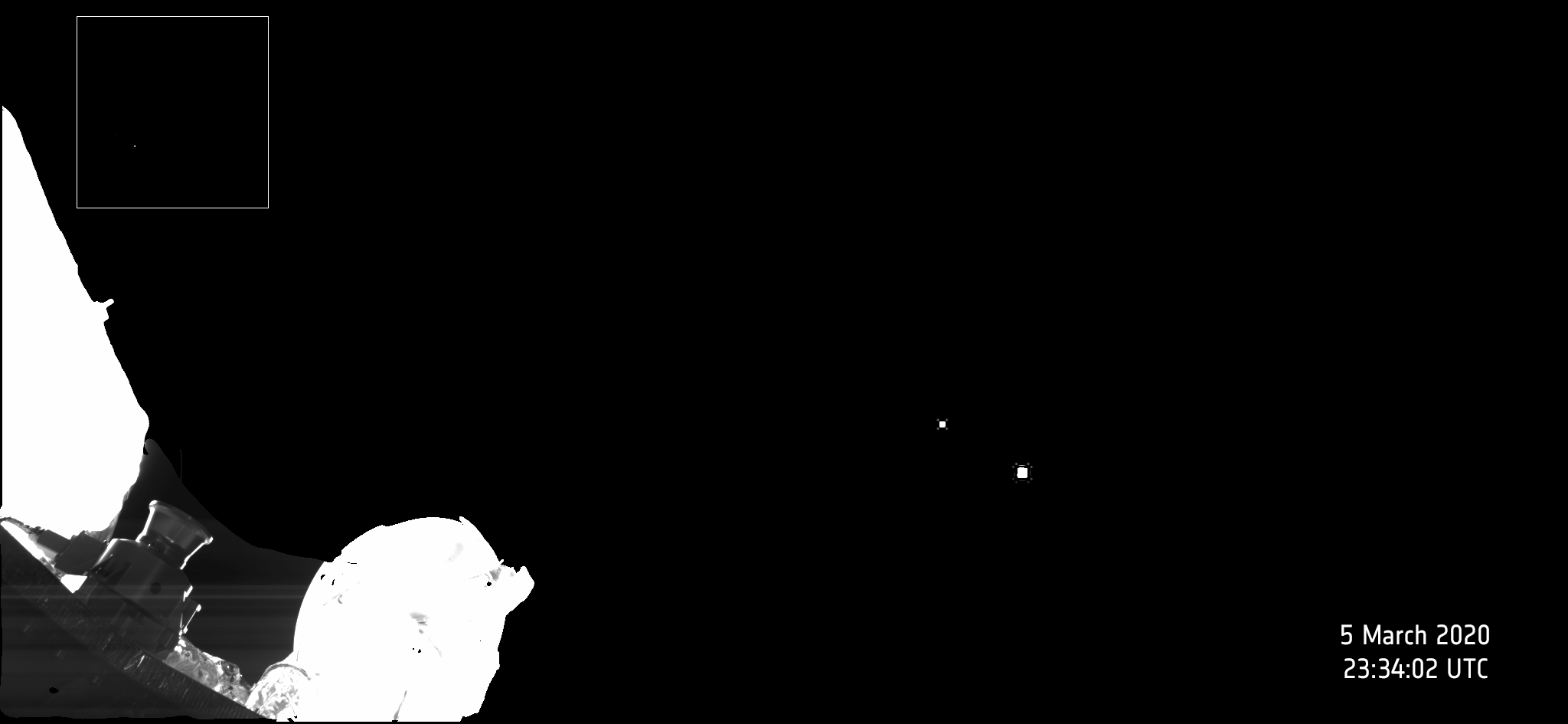Europe's Mercury-bound BepiColombo will swing past Earth soon! Here's what you need to know.
Mark your calendars for April 10!

A mission dubbed BepiColombo is bound for Mercury, but in order to reach its destination, it needs to take the scenic route, beginning with a flyby of Earth later this month, during which skywatchers may be able to spot the probe.
BepiColombo, which launched in October 2018, is a joint project of the European Space Agency (ESA) and the Japan Aerospace Exploration Agency (JAXA). The mission is scheduled to arrive at Mercury in December 2025, when it will split into two component spacecraft and begin observing the tiniest planet in our solar system up close. But, in order to reach the small planet, BepiColombo will need to complete a total of nine planetary flybys in order to achieve the right speed to orbit its target. The first of these flybys will be the only one of Earth and it happens on April 10.
"This is the last time we will see BepiColombo from Earth," Joe Zender, BepiColombo deputy project scientist at ESA, said in a statement. "After that it will head deeper into the inner solar system."
Related: A radar station in Puerto Rico can see ice on Mercury
This maneuver was scheduled long ago, but the spread of the COVID-19 pandemic on Earth has threatened ESA's ability to prepare as desired for the flyby. In response to the pandemic, the agency put four other missions into safe hold mode, pausing their science operations for more than a week in order to prioritize flyby preparations. (Those missions have resumed normal activity, according to an ESA statement released April 2.)
"The Earth swing-by is a phase where we need daily contact with the spacecraft," Elsa Montagnon, BepiColombo spacecraft operations manager at ESA, said in the statement. "This is something that we cannot postpone. The spacecraft will swing by Earth independently in any case."
But spacecraft personnel would very much prefer to be on hand for the maneuver, rather than leave BepiColombo to do it alone. That concern is in part because the flyby is one step that will determine the success of the entire mission.
Get the Space.com Newsletter
Breaking space news, the latest updates on rocket launches, skywatching events and more!
During this flyby, the spacecraft will be carefully aligned with Earth so that the probe slows down a smidge, about 3 miles (5 kilometers) per second, compared to the sun, which will send it deeper into the heart of the solar system. The nudge will align the spacecraft for two similar flybys of Venus this October and in August 2021 that will also tweak the probe's trajectory.
BepiColombo will make its closest approach to Earth on April 10 at 12:25 a.m. EST (425 GMT), when it will be 7,877 miles (12,677 km) away, according to a website set up by Italian National Institute for Astrophysics, which is participating in the mission.
During the flyby, skywatchers may be able to catch sight of the spacecraft with a telescope or relatively large binoculars, although the brightness of a fairly full moon will reduce visibility. Skywatchers near the equator, particularly in the Southern Hemisphere, will have the best odds of spotting the probe, according to viewing tips provided by ESA.
Whether or not you can spot BepiColombo, the spacecraft will be looking toward you. Scientists on the mission will be using the maneuver as an opportunity to test some of the instruments on board the probe. Among the devices that will make observations are magnetometers, a host of particle detectors, an infrared spectrometer and, of course, a trio of cameras.
"We will see the Earth approaching and getting bigger," Zender said in the statement. "When it reaches the nearest point, we will take a few images, and then we are planning to capture a whole sequence of photographs over several hours looking at the Earth-moon system as it gets smaller and smaller until we lose it completely."
- Photos of Mercury from NASA's Messenger spacecraft
- BepiColombo in pictures: A Mercury mission by Europe and Japan
- See amazing photos of Mercury by a doomed NASA spacecraft (video)
Email Meghan Bartels at mbartels@space.com or follow her @meghanbartels. Follow us on Twitter @Spacedotcom and on Facebook.
OFFER: Save at least 56% with our latest magazine deal!
All About Space magazine takes you on an awe-inspiring journey through our solar system and beyond, from the amazing technology and spacecraft that enables humanity to venture into orbit, to the complexities of space science.
Join our Space Forums to keep talking space on the latest missions, night sky and more! And if you have a news tip, correction or comment, let us know at: community@space.com.

Meghan is a senior writer at Space.com and has more than five years' experience as a science journalist based in New York City. She joined Space.com in July 2018, with previous writing published in outlets including Newsweek and Audubon. Meghan earned an MA in science journalism from New York University and a BA in classics from Georgetown University, and in her free time she enjoys reading and visiting museums. Follow her on Twitter at @meghanbartels.










